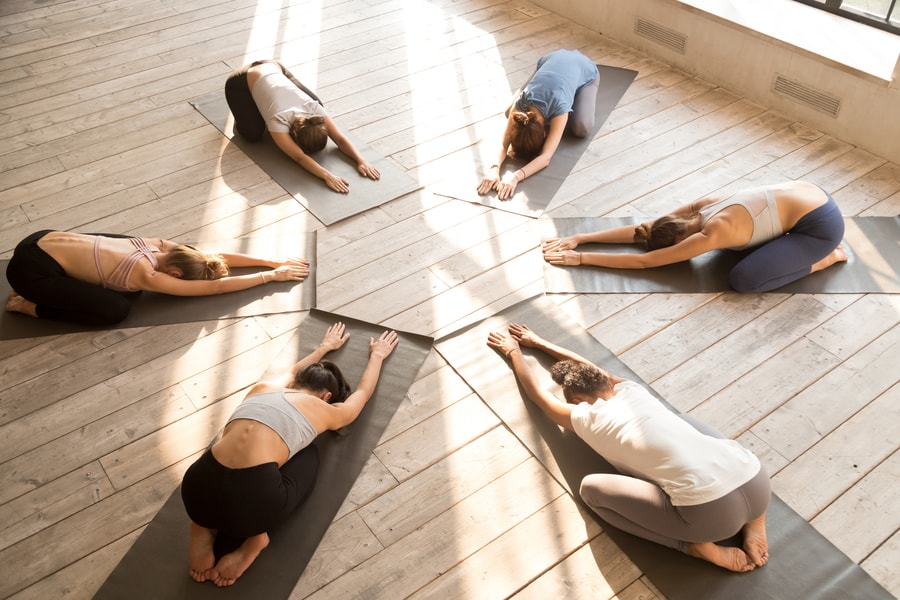
YAMAS
The first Limb of Yoga focuses on disciplines and practices concerning our relationship with the world around us. The Yamas include: Ahimsa (non-violence), Satya (truthfulness), Asteya (non-stealing), Brahmacharya (right use of energy), Aparigraha (non-greed/non-hoarding). These Yamas are agreements, standards, and disciplines that guide our relationship dynamics with the environment. They are directives for both metaphysical Ways of Being and practical standards of behavior in the world.
NIYAMAS
The second Limb of Yoga, as described by Patanjali in The Yoga Sutras, contains the Niyamas. These duties/observances are directed towards ourselves as inner disciplines to be cultivated. The Niyamas include: Saucha (cleanliness), Santosha (contentment), Tapas (discipline/burning desire/sacrificing preference), Svadhyaya (self-study/self-reflection), Isvarapranidaha (surrender to a Higher Power). The Yogi who is committed to his/her own evolution will undoubtedly be in the practice of actively cultivating these qualities both in consciousness and behavior. From a very general overview of these first two limbs, you can see how the term ‘Yoga’ includes far more than physical postures.
ASANAS
Our third Limb Of Yoga literally translates as ‘seat’. This is the physical aspect of Yoga most of us in the West are familiar with. Asana practice guides us into mindful postures of the physical body in particular sequences. We use our breath to both mindfully move and find stillness in our postures. The breath is our bridge between mind and body. Mindful breathing aligns and expands our state of Consciousness. Each asana is considered a seat, with the ultimate seat arriving at the culmination of our practice: our Meditation seat. The mindful movements of Yoga asanas create the foundation, the precursor, for arriving in stillness in Meditation.
PRANAYAMA
The fourth Limb of Yoga contains ancient breathing techniques known as Pranayama. Prana means life force/energy. Yam means to administer/control. This form of Yoga is the mindful administration of our vital life force: the Breath! These ancient breathing techniques are flowing with modern relevance. They release stress in our overstimulated bodies, clear and expand our clouded minds, and cultivate self-awareness in our state of consciousness. Don’t take my word for it, check it out!
PRATYAHARA
Our fifth Limb means to ‘withdraw that which we are taking in,’ or sense withdrawal. In this way, we practice Pratyahara when we practice both Pranayama and Dhyana (Meditation). In our high-demand, fast-paced lives, it’s commonplace to become absorbed into the world, with all of its demands, activities, and opportunities. If we are unbalanced, we may begin to lose ourselves through the stress of overstimulation and low adaptation energy. This limb of Yoga invites us to move within. When we withdraw from the world, we can offer our Soma (consciousness flow) to our inner world.
DHARANA
The sixth limb of Yoga means focused concentration. You can see how this is closely related to Pratyahara (withdrawing our senses). When we focus upon something, we naturally withdraw from all non-points of focus. Many Meditation techniques use Dharana as their approach. When our nervous system is pacified and our body relaxed, it creates the ideal conditions for the mind to practice Dharana.
DHYANA
Our seventh Limb is a personal favorite: Meditative Absorption. While Dharana describes an approach to Meditation, Dhyana describes a state of Meditation. I teach Vedic Meditation. Our particular technique is specifically designed to guide the practitioner into Meditative absorption. If you’re just getting started with Meditation, I highly recommend personalized guidance. Nothing will support you like intimate instruction and ongoing community support.
SAMADHI
We arrive at Bliss & Enlightenment for the ultimate Limb of our eight-limbed tree. All other limbs are designed to support the awakening of Samadhi within one’s consciousness. Samadhi is the internal state we cultivate as we apply the Knowledge from the other aspects of our proverbial tree. The Vedas teach us that Bliss is our inherent nature, our birthright. From this framing, the eight limbs of Yoga are designed to re-connect us to that which we already are, like the wave realizing it is Ocean. Each of these limbs uniquely work together to cultivate Samadhi within one’s state of consciousness over time. Namaste!

Leave A Comment